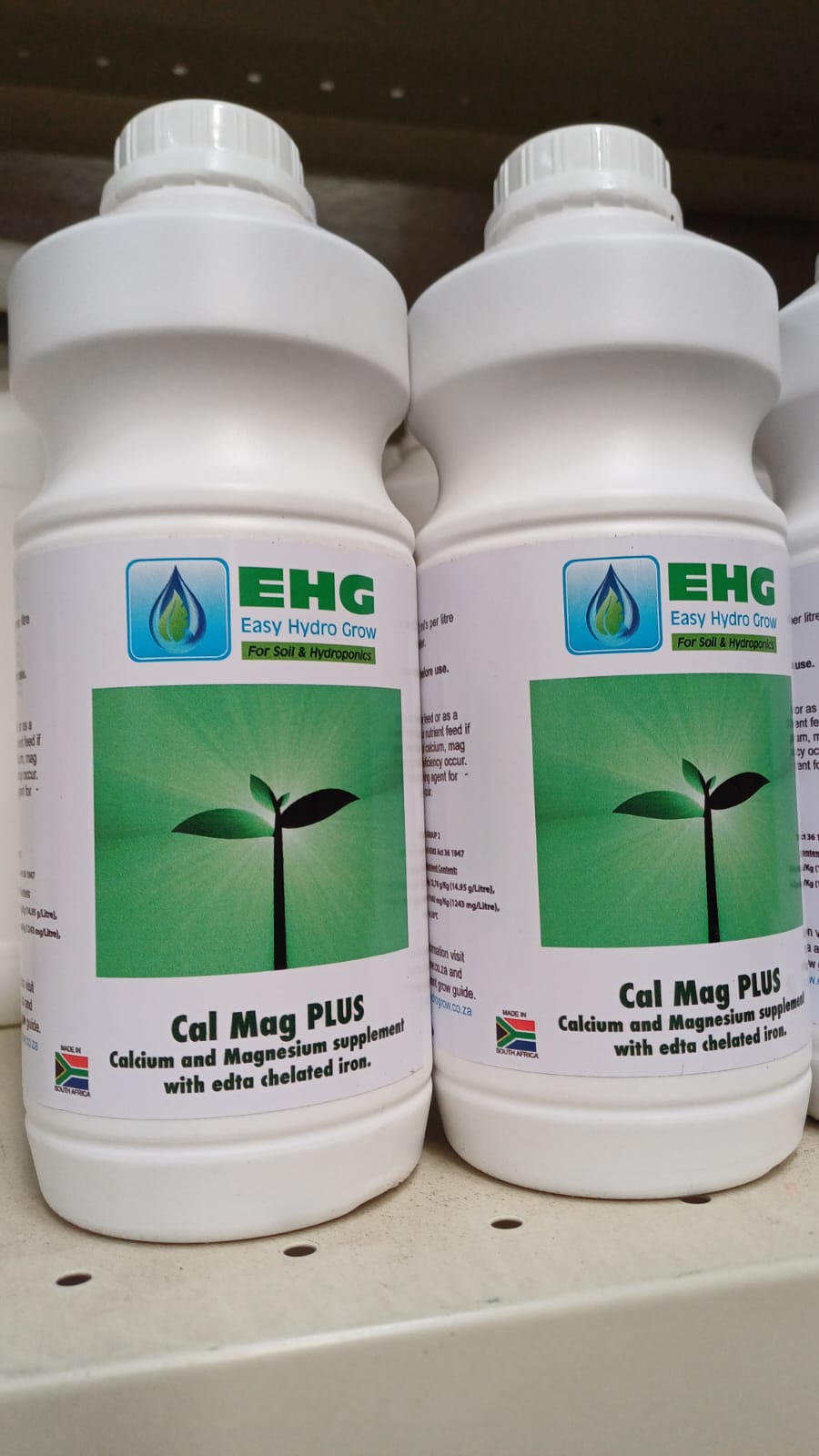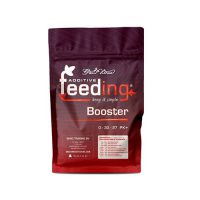EHG Cal Mag PLUS
R130.00 – R2 300.00
Description
EHG Cal Mag PLUS – supplementing the base EHG mineral plant nutrient feeding ranges, EHG Cal Mag PLUS is there for you whenever signs of Calcium or Magnesium deficiencies start showing up in your plants.
Check out EHG’s advanced grow-guide HERE!
2ml / lt dosage as root feed.
Can also be used to buffer coco coir: Hydroponic.co.za recommends 200ml / 5kg brick, soaked for at least a few hours, and then rinsed with clean water.
Contents:
N: 4%
Ca: 3.2%
Mg: 1.2%
Fe: o.1%
Buffering coir:
When coco coir is buffered, for instance using EHG Cal Mag PLUS, it undergoes a process that replaces the potassium and sodium that is held onto by the coir, with calcium and magnesium that is added to the coir during the buffering process. Doing this before using the coir, makes this process happen BEFORE plants is introduced, instead of the process happening with plants growing in the coir already.
Nobody wants their coir to “steal” the Ca and Mg in their nutrient solutions when feeding their plants and for these minerals to be replaced with Sodium and Potassium instead, but this is what will happen when using improperly buffered and rinsed coir.
Buffering ( and then rinsing ) coir is a proactive measure to create an optimal growing environment that supports healthy root development, robust vegetative growth, and bountiful yields for a wide range of plant species.
Other reasons for improper uptake of Ca and Mg:
- Imbalanced pH Levels: One of the primary causes of nutrient lockout is incorrect pH levels in the growing medium. When the pH is too high or too low, it can hinder the availability of calcium and magnesium for plant uptake. For example, in acidic conditions, calcium and magnesium ions may become bound to other elements, making them unavailable to plant roots.
- Excessive Nutrient Levels: High concentrations of other nutrients, such as potassium (K) or ammonium (NH4+), can outcompete calcium and magnesium for uptake by plant roots. This can lead to an imbalance in nutrient absorption, causing calcium and magnesium deficiencies.
- Presence of Other Cations: Certain elements in the soil or growing medium, such as aluminum (Al) or iron (Fe), can form complexes with calcium and magnesium ions, rendering them unavailable to plants.
- Overfertilization: Applying excessive amounts of fertilizers that contain certain elements, especially those high in phosphorus (P), can disrupt the balance of nutrient uptake and result in calcium and magnesium lockout.
- Water Quality: Poor-quality irrigation water with high levels of bicarbonates or carbonates can cause calcium and magnesium to precipitate and become less available for plant uptake.
- Competition between Nutrients: In some cases, different nutrients might have antagonistic relationships, meaning an excess of one nutrient can inhibit the uptake of another, leading to nutrient lockout.
- Environmental Stress: Environmental stressors, such as extreme temperatures or waterlogged conditions, can affect nutrient uptake and contribute to calcium and magnesium lockout.









